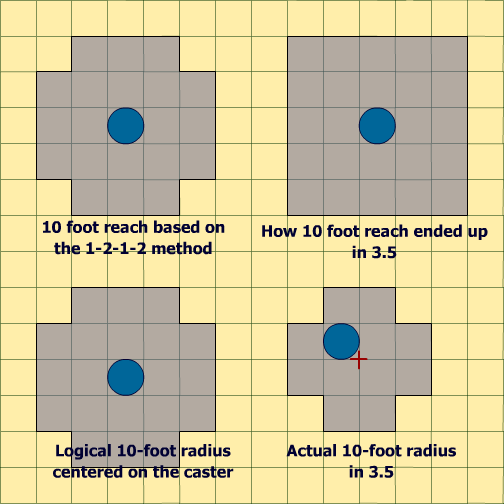DarkKestral
First Post
Mouseferatu said:So why is the fireball any different? It's just another "object" that isn't really a square, but is abstracted to one.
Correct, but if we assume that it's moving, then it's managing to "be a square" because nothing else can be there. However, in the case of say... a 90' line of effect, it's hard for a player to not feel shortchanged when the wizard gets blasted for being 18 squares away diagonally, while the fighter is 19 but closer by all gameworld physics except for the artificial combat physics. Likewise, when someone says something is a sphere to us, but we see it as a cube, the normal person is going to be looking at the first like the first is a conman and is selling them the Brooklyn Bridge. The professional mathematician may say "in what sort of space and what topology?" but for most people, that is not their initial response, because the sorts of math that would make that claim rational and valid are not what they are familiar with.
Some people can adjust to the mental gymnastics, but it's NOT natural to a wide number of people, and it serves to deal a bad blow to any additional "immersion" we gained by "streamlining" rules for what I suspect is a large percentage of the market. In short, people may get used to it, in time, but I suspect that for many, it will be the cause of endless argument and complaints about "GM favoritism" and other complaints that have no basis in fact and full basis in the ruleset used.





